Concawe Review
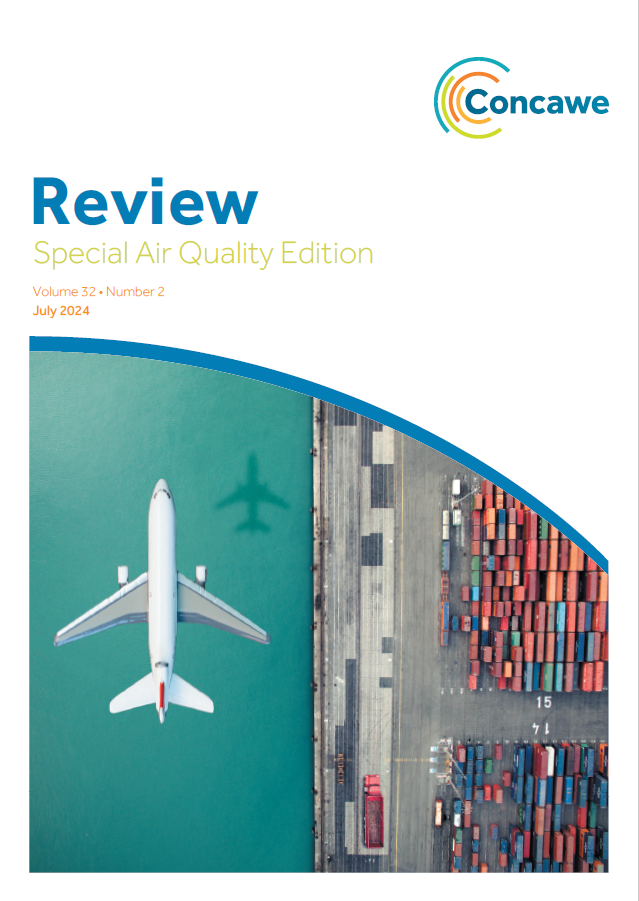
Concawe Reviews
Concawe Review 32.2 – Special Air Quality Edition
This Review is focused on air quality.
The first and third articles in this Review summarise studies conducted in collaboration with TNO, which analyse the influence that some sectors have on the a...
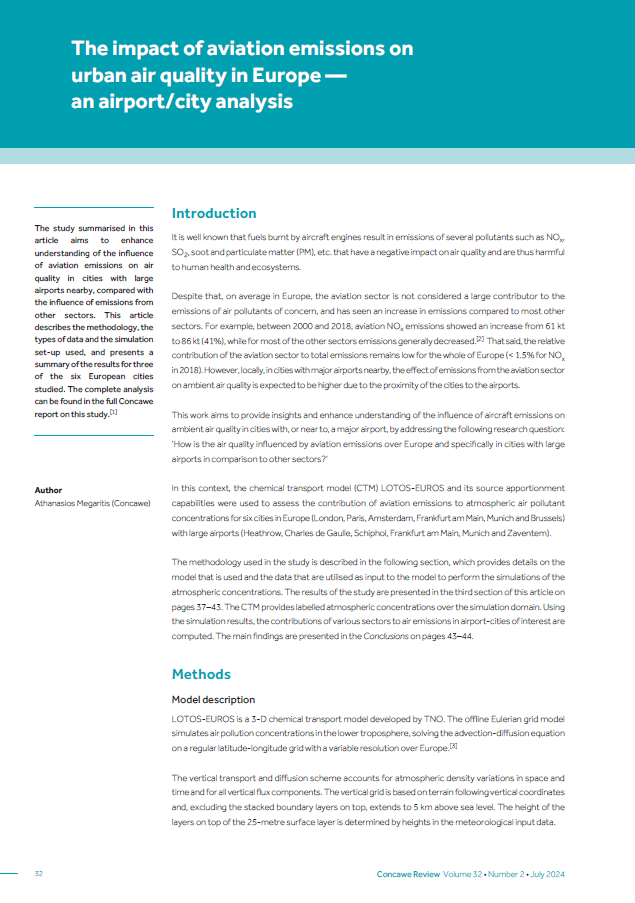
Concawe Reviews
The impact of aviation emissions on urban air quality in Europe – An airport/city analysis
This article presents results from a modelling study carried out to assess the influence that aviation emissions have on air quality in Europe. Using a 3-D chemical transport model (LOTOS-EUROS) and i...
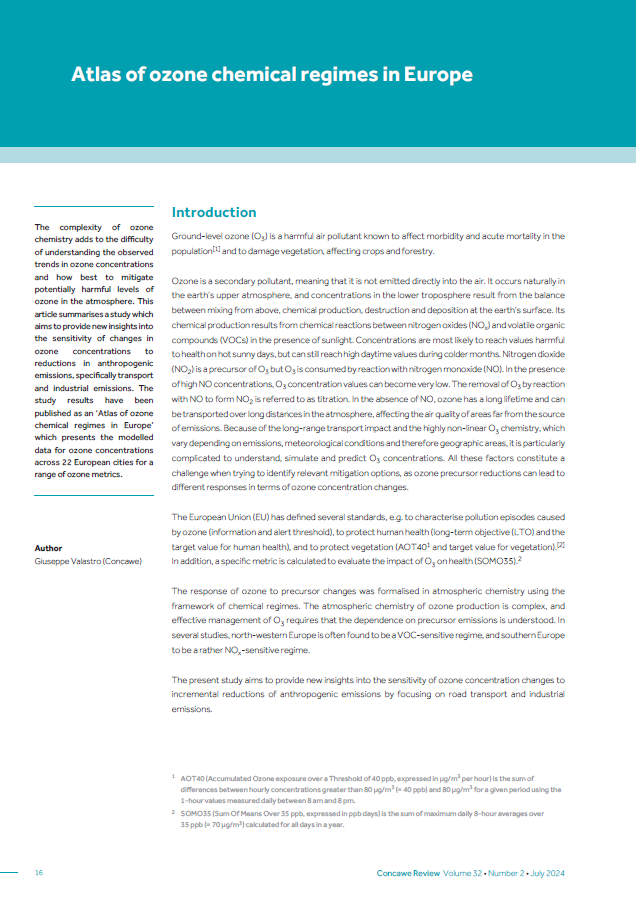
Concawe Reviews
Atlas of Ozone chemical regimes in Europe
While concentrations of most air pollutants have been decreasing in Europe over the past 20 years, ozone (O3 ) is showing variable trends, with increasing average concentrations and decreasing peak on...
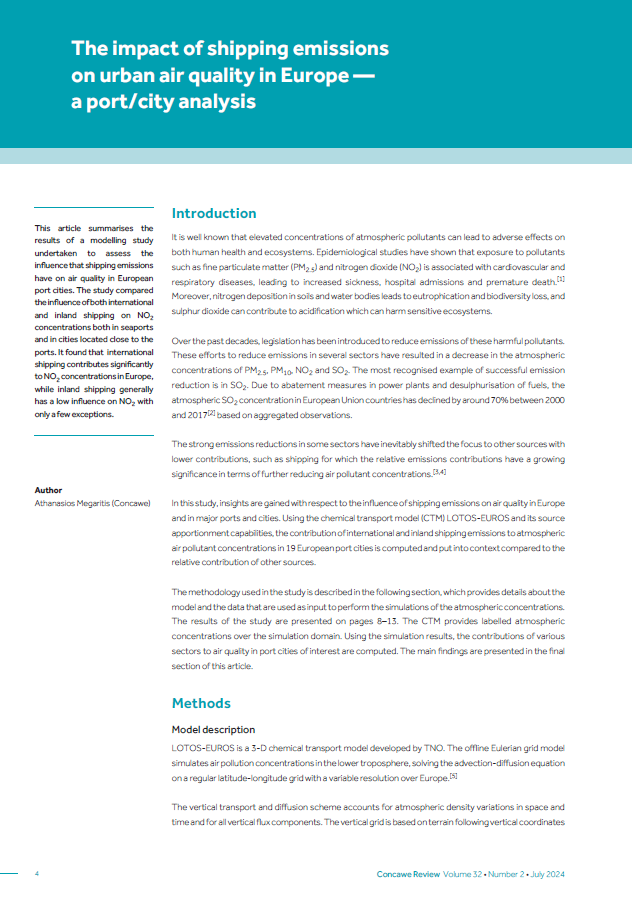
Concawe Reviews
The impact of shipping emissions on urban air quality in Europe – A port/city analysis
This article presents results from a modelling study carried out to assess the influence that shipping emissions have on the air quality in European port cities. Using a 3-D chemical transport model (...
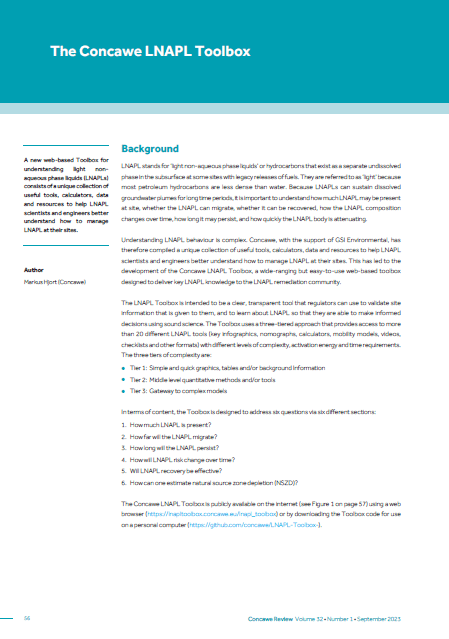
Concawe Reviews
The Concawe LNAPL Toolbox
The Concawe LNAPL Toolbox is a web-based tool that provides essential information to the LNAPL remediation community. LNAPL, or light non-aqueous phase liquids, are typically historic hydrocarbon rele...
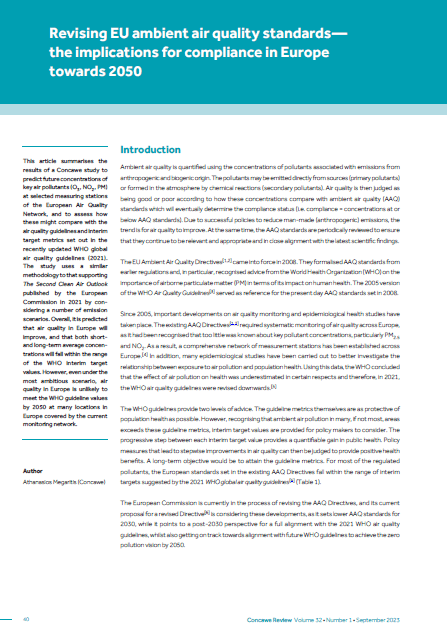
Concawe Reviews
Revising EU ambient air quality standards—the implications for compliance in Europe towards 2050
This article presents the results of a modelling study carried out to examine how concentrations of key air pollutants (i.e. nitrogen dioxide (NO2), particulate matter (PM) and ozone (O3)) would vary...
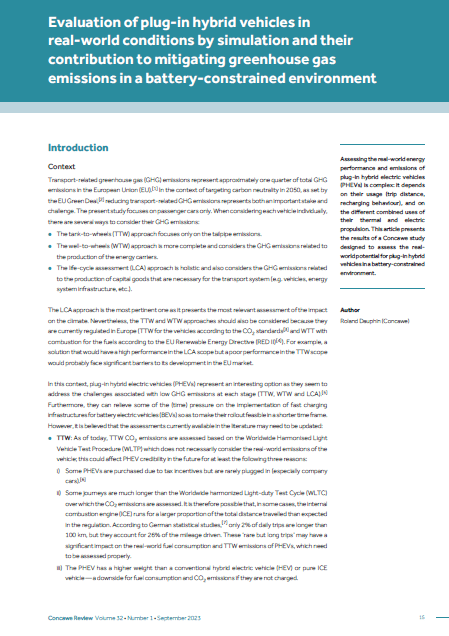
Concawe Reviews
Evaluation of plug-in hybrid vehicles in real-world conditions by simulation and their contribution to mitigating greenhouse gas emissions in a battery-constrained environment
Assessing the real-world energy performance and emissions of plug-in hybrid electric vehicles (PHEVs) is complex: it depends on their usage (trip distance, recharging behaviour), which results in diff...
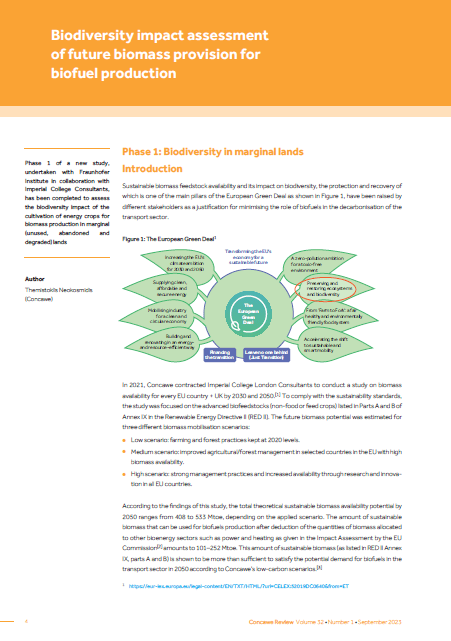
Concawe Reviews
Biodiversity impact assessment of future biomass provision for biofuel production
Restoring and preserving biodiversity is widely acknowledged as crucial in the mobilisation of biofeedstocks for biofuels. Following Concawe’s joint study with Imperial College Consultants on the po...
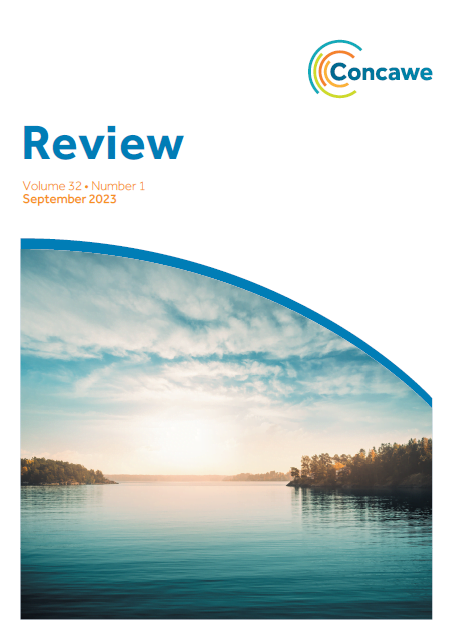
Concawe Reviews
Concawe Review 32.1
As the September 2023 edition of the Concawe Review was being finalised, a number of reports discussed the decrease in the biodiversity of the planet. Because the biodiversity contained in different e...
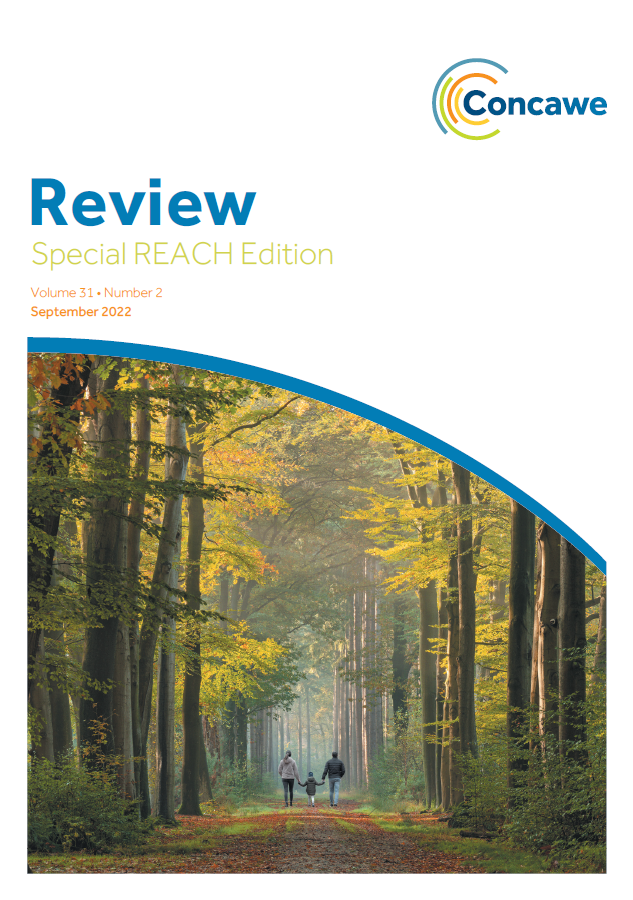
Concawe Reviews
Concawe Review Special REACH
Following the REACH registration phase, ECHA began the substances evaluation phase in 2012. The proof of similarity and subsequent justification of read-across between Concawe’s substances, which is...
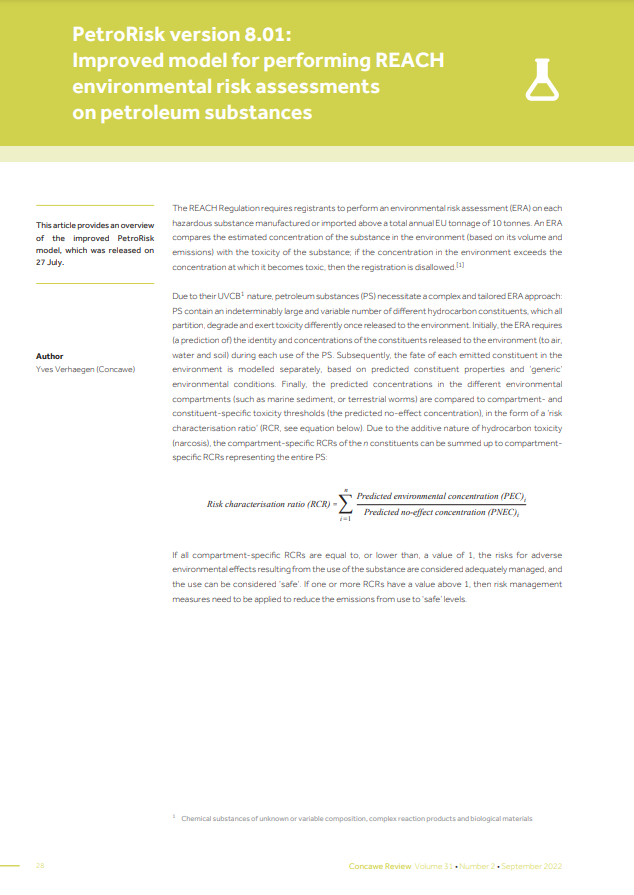
Concawe Reviews
PetroRisk version 8.01: Improved model for performing REACH Environmental Risk Assessments on petroleum substances
Concawe has updated the PetroRisk model used to calculate the environmental risk assessments (ERAs) for petroleum substances needed for REACH registration dossiers. The updates result in a model which...
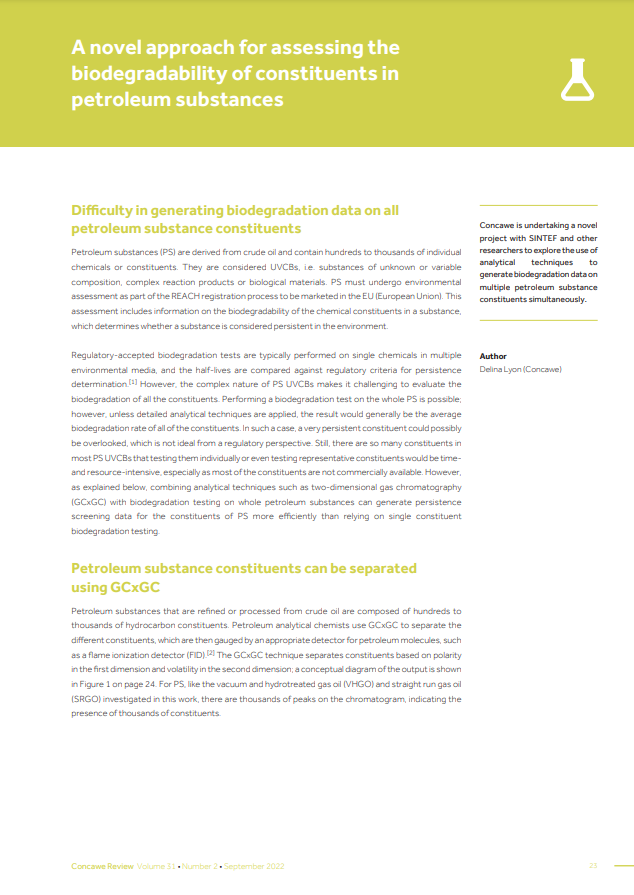
Concawe Reviews
A novel approach for assessing the biodegradability of constituents in petroleum substances
Petroleum substances contain hundreds to thousands of constituents, making it very difficult to generate biodegradation data on all of those constituents individually.
Concawe is undertaking a nove...
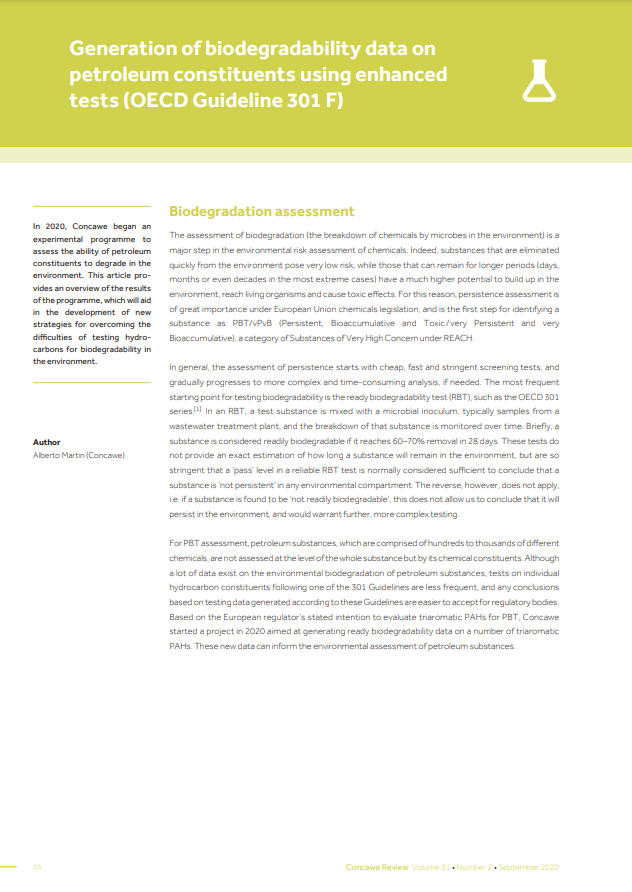
Concawe Reviews
Generation of biodegradability data on petroleum constituents using enhanced tests (OECD guideline 301 F)
To improve the persistence assessment of petroleum substances, Concawe started a testing programme for several hydrocarbons. Ready biodegradability tests were proposed on six 3-ring polycyclic aromati...
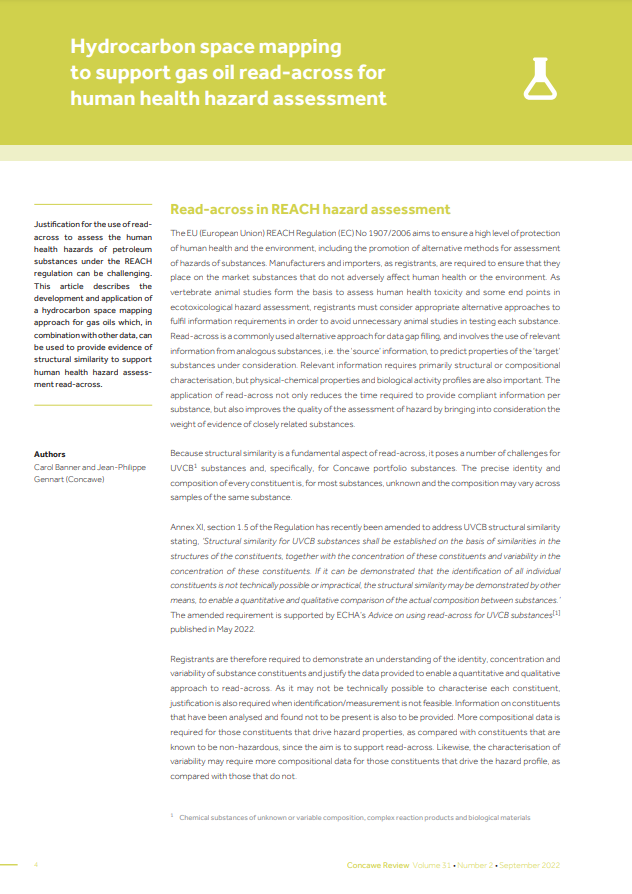
Concawe Reviews
Hydrocarbon space mapping to support gas oil read-across for human health hazard assessment
As vertebrate animal studies form the basis for assessing certain human health and ecotoxicity hazards under the EU (European Union) REACH regulation, appropriate alternative approaches to fulfil info...
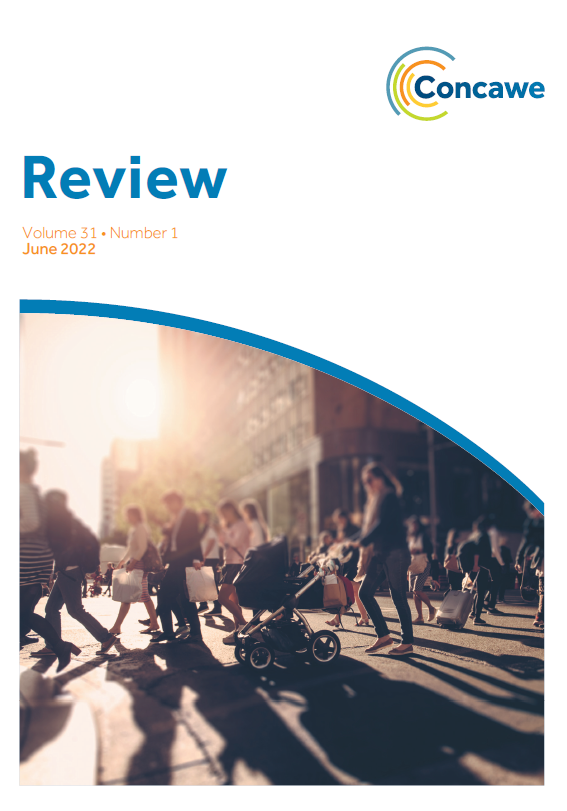
Concawe Reviews
Concawe Review 31.1
Evaluation of pathways to decarbonise transport, simulations of the impact of our products on air quality, evaluation of the safety of our industrial and supply activities: the articles in this editi...
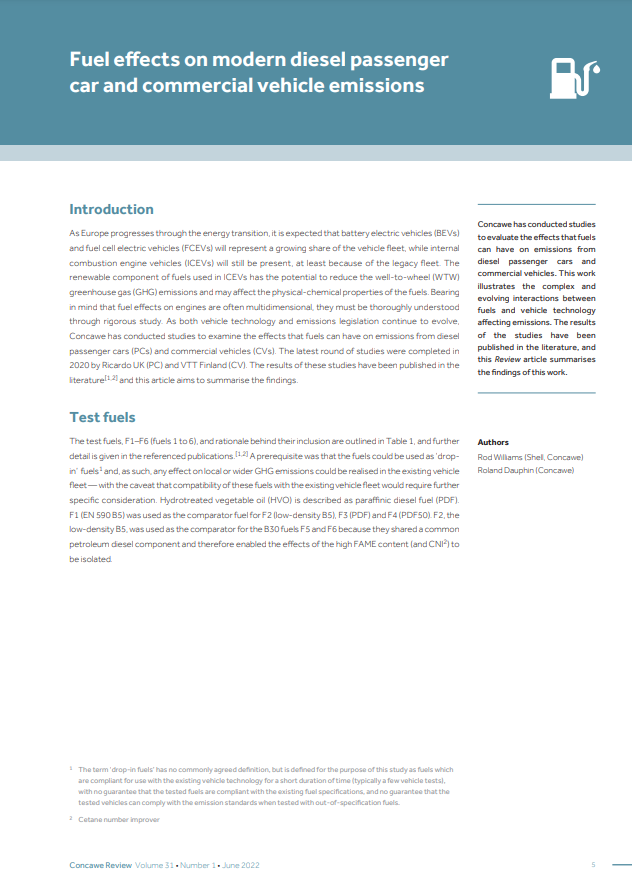
Concawe Reviews
Fuel effects on modern diesel passenger car and commercial vehicle emissions (Concawe Review 31.1)
As both vehicle technology and emissions legislation continue to evolve, Concawe has conducted studies to examine the multidimensional effects that fuels can have on greenhouse gases (GHGs) and pollut...
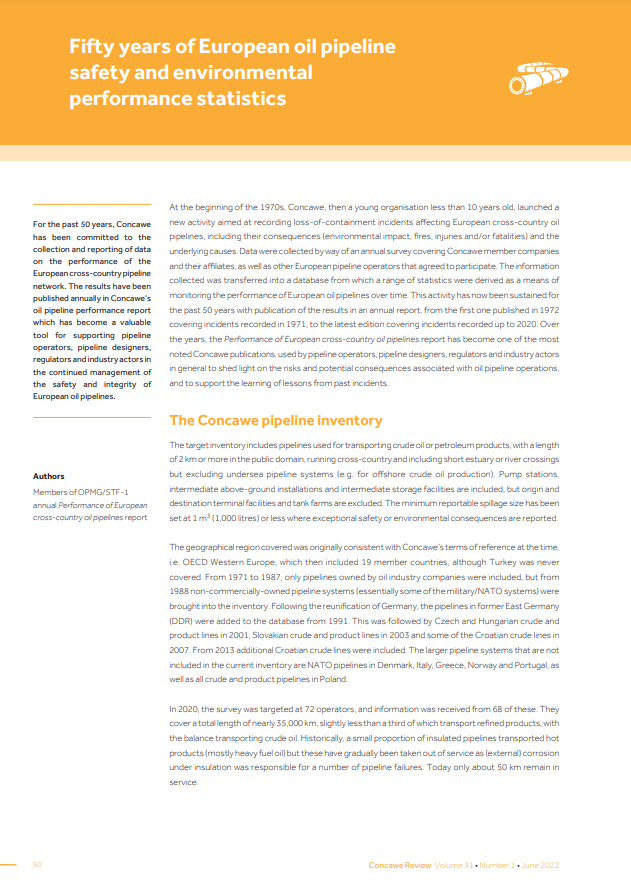
Concawe Reviews
Fifty years of European oil pipeline safety and environmental performance statistics (Concawe Review 31.1)
At the beginning of the 1970s, Concawe, then a young organisation less than ten years old, launched a new activity aimed at recording loss-of-containment incidents affecting European cross-country oil...
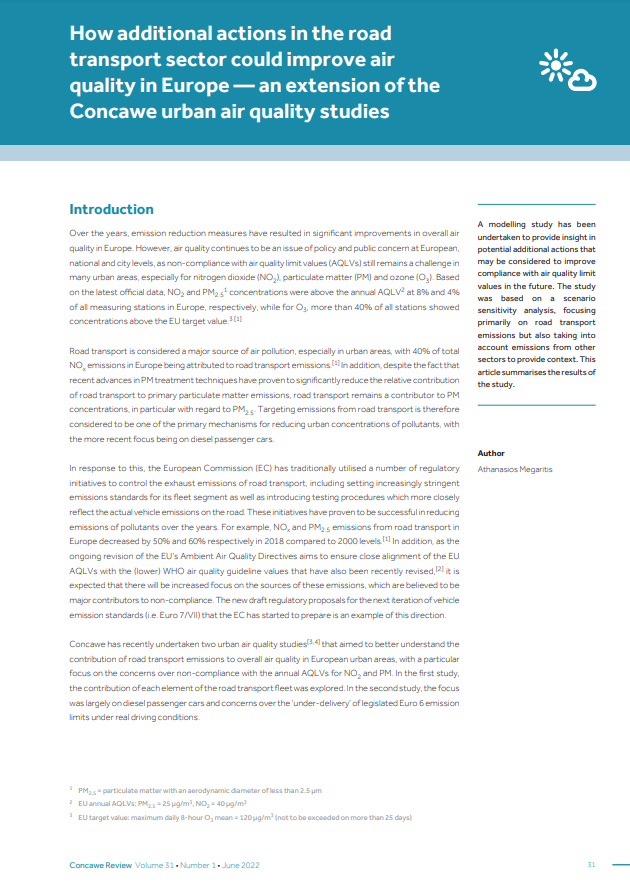
Concawe Reviews
How additional actions in the road transport sector could improve air quality in Europe — an extension of the Concawe urban air quality studies (Concawe Review 31.1)
This article presents results from a modelling study carried out to examine how concentrations of the major urban pollutants (i.e. nitrogen dioxide (NO2), particulate matter (PM) and ozone (O₃)) wou...
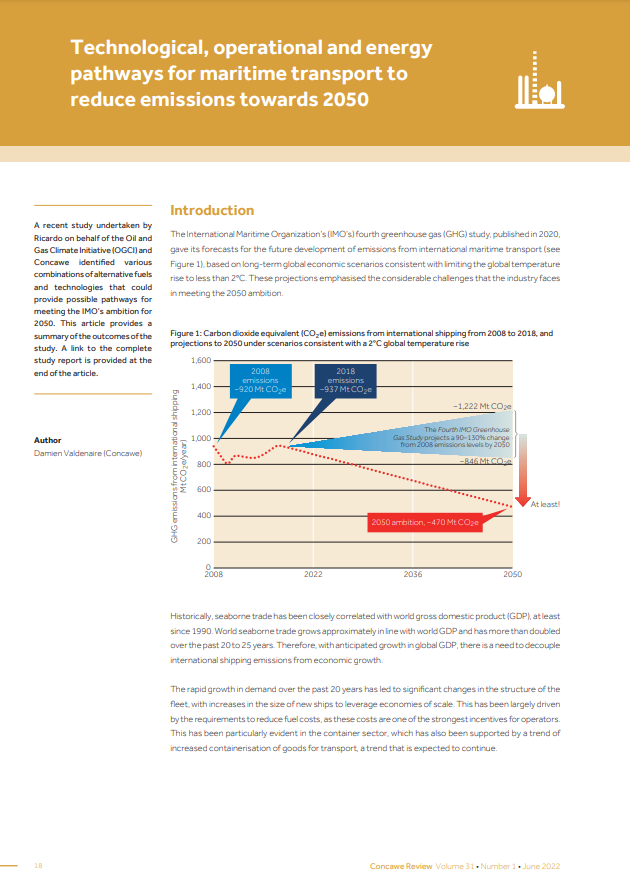
Concawe Reviews
Technological, operational and energy pathways for maritime transport to reduce emissions towards 2050 (Concawe Review 31.1)
This article provides a summary of a ‘deep dive’ study into the future development of emissions from international maritime transport. The study is part of Concawe’s Low Carbon Pathways project,...
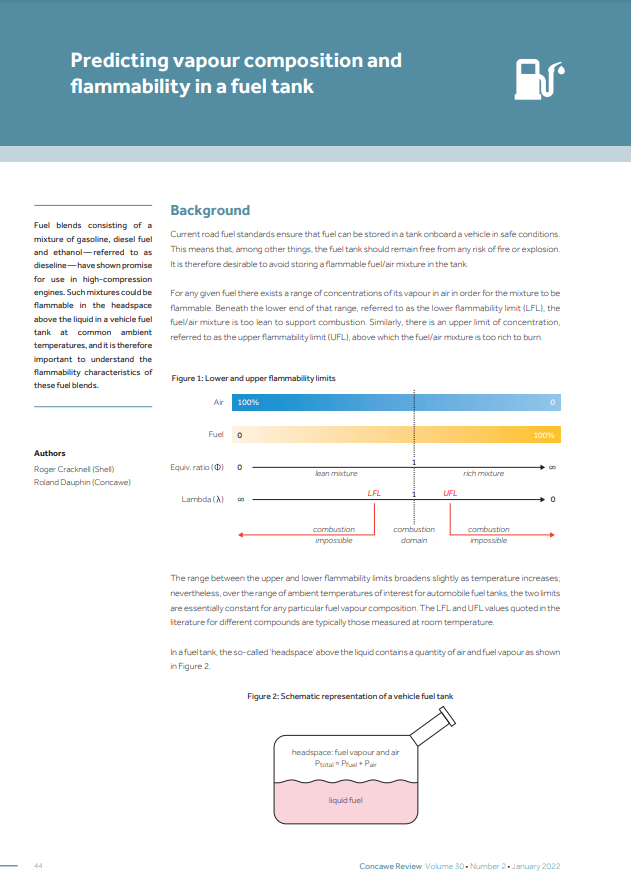
Concawe Reviews
Predicting vapour composition and flammability in a fuel tank (Concawe Report 30.2)
Fuel blends consisting of a mixture of gasoline, diesel fuel and ethanol—referred to as dieseline—have shown promise for use in high-compression engines. Such mixtures could be flammable in the he...
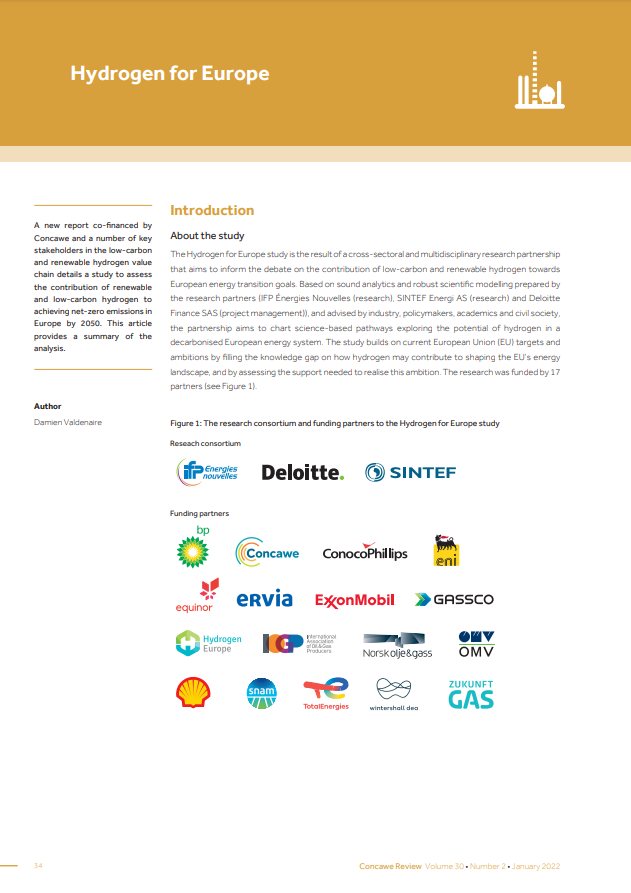
Concawe Reviews
Hydrogen for Europe (Concawe Review 30.2)
A new report co-financed by Concawe and a number of key stakeholders in the low-carbon and renewable hydrogen value chain details a study to assess the contribution of renewable and low-carbon hydroge...
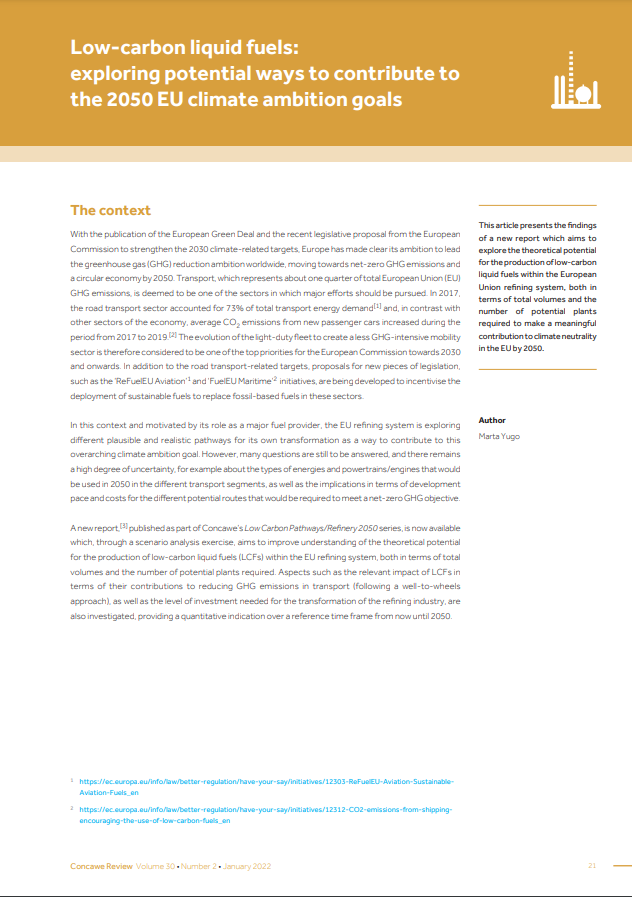
Concawe Reviews
Low-carbon liquid fuels: exploring potential ways to contribute to the 2050 EU climate ambition goals (Concawe Review 30.2)
With the publication of the European Green Deal and the recent legislative proposal from the European Commission to strengthen the 2030 climate-related targets, Europe has made clear its ambition to l...
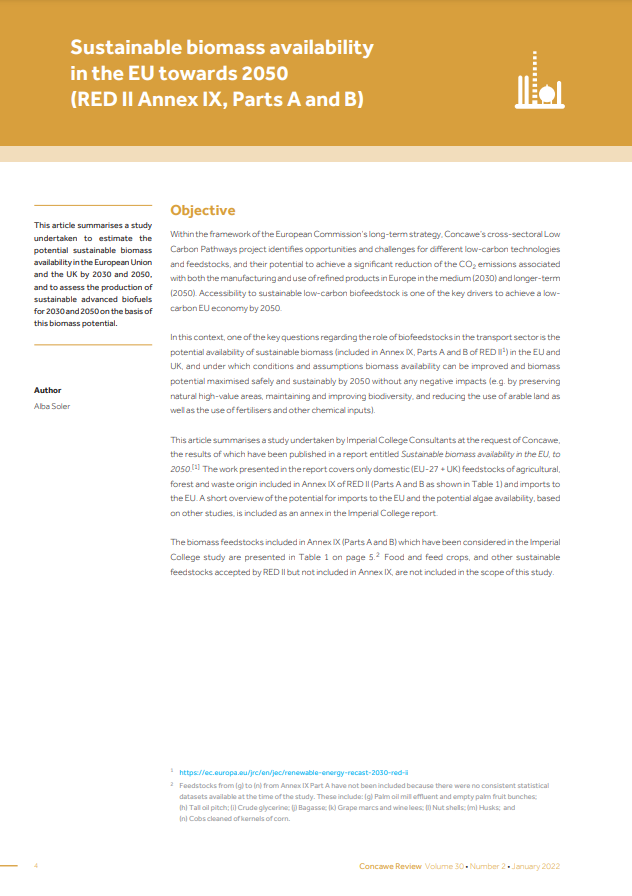
Concawe Reviews
Sustainable biomass availability in the EU towards 2050 (RED II Annex IX, Parts A and B) (Concawe Review 30.2)
Within the framework of the European Commission’s long-term strategy, Concawe’s cross-sectoral Low Carbon Pathways project identifies opportunities and challenges for different low-carbon technolo...

Concawe Reviews
Concawe Review 30.2
This Review adds some important articles to Concawe’s Low Carbon Pathways project, a programme started several years ago to develop a holistic view of how the refining industry could contribute to...